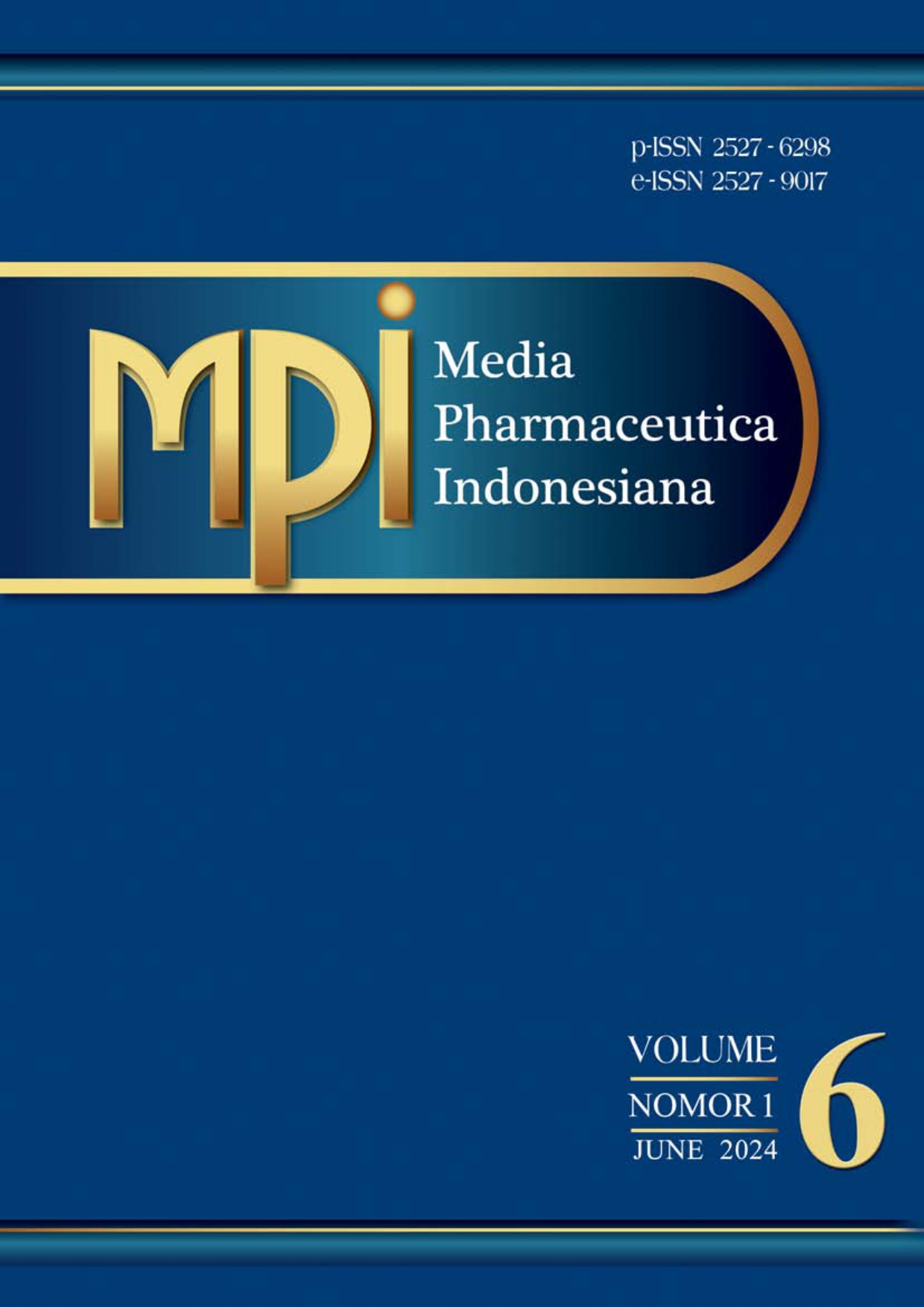Karakterisasi Fisikokimia dan Organoleptik Tablet Effervescent Ashitaba (Angelica keiskei)
 Abstract Views:
500 times
Abstract Views:
500 times
 PDF Downloads:
233 times
PDF Downloads:
233 times
Abstract
Ashitaba (Angelica keiskei) merupakan tanaman yang mengandung senyawa flavonoid (kalkon) dan tanin yang dapat berperan sebagai antioksidan. Kandungan antioksidan pada ashitaba akan mudah dikonsumsi dalam bentuk sediaan tablet effervescent. Penelitian ini bertujuan untuk mengetahui formula terbaik tablet effervescent ashitaba. Tablet effervescent merupakan bentuk sediaan yang menghasilkan gelembung gas karbondioksida sebagai hasil dari reaksi kimia dalam larutan yang mengandung senyawa asam dan senyawa karbonat atau bikarbonat hingga terdapat rasa sparkly pada minuman setelah tablet larut sempurna dalam air. Proses pembuatan diawali dengan ekstraksi senyawa flavonoid dengan metode maserasi dalam pelarut etanol 70%, lalu dikeringkan menggunakan spray dryer dengan maltodekstrin sebagai drying aid. Tablet effervescent dibuat berdasarkan formula yang telah ditentukan menggunakan penambahan ekstrak sebesar 10; 15; 20; 25% (b/v). Berdasarkan hasil analisis statistik karakteristik fisikokimia yang telah dilakukan, ditemukan adanya perbedaan signifikan. Perlakuan dengan penambahan ekstrak 15% merupakan perlakuan terbaik menurut uji indeks efektivitas dengan aktivitas antioksidan sebesar 29,43±1,84%, kadar air 3,68±0,28%, waktu larut 40±0,99 detik dan warna tablet kuning merah.
Ashitaba (Angelica keiskei) is a plant that contains flavonoid compounds (chalcone) and tannins which can act as antioxidants. The antioxidant content in ashitaba can be easily consumed in the form of effervescent tablets. This research aims to determine the best formula for ashitaba effervescent tablets. Effervescent tablets are a dosage form that produces carbon dioxide gas bubbles as a result of a chemical reaction in a solution containing acid compounds and carbonate or bicarbonate compounds so that there is a sparkly taste in the drink after the tablet dissolves completely in water. The manufacturing process begins with the extraction of flavonoid compounds using the maceration method in 70% ethanol solvent, then dried using a spray dryer with maltodextrin as a drying aid. Effervescent tablets are made based on a predetermined formula using an extract addition of 10; 15; 20; 25% (w/v). Sample treatment with the addition off 15% extract was the best treatment according to the effectiveness index test with antioxidant activity of 29.43 ± 1.84%, water content of 3.68 ± 0.28%, dissolving time of 40 ± 0.99 seconds and colour of the tablet was yellow red.
Downloads

This work is licensed under a Creative Commons Attribution-ShareAlike 4.0 International License.
Articles published in MPI are licensed under a Creative Commons Attribution-ShareAlike 4.0 International (CC BY-SA) license. You are free to copy, transform, or redistribute articles for any lawful purpose in any medium, provided you give appropriate credit to the original author(s) and MPI, link to the license, indicate if changes were made, and redistribute any derivative work under the same license.
Copyright on articles is retained by the respective author(s), without restrictions. A non-exclusive license is granted to MPI to publish the article and identify itself as its original publisher, along with the commercial right to include the article in a hardcopy issue for sale to libraries and individuals.
By publishing in MPI, authors grant any third party the right to use their article to the extent provided by the CC BY-SA license.

 DOI:
DOI:










